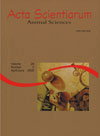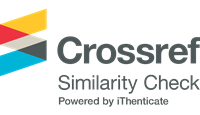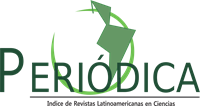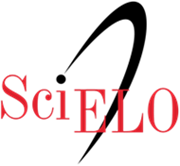<b>Performance and nutrient digestibility in alternative broilers fed with high-moisture sorghum grains silage</b> - DOI: 10.4025/actascianimsci.v29i3.557
Abstract
The objective of this study was to evaluate levels of inclusion of high-moisture sorghum grains silage (HMSS) in replacement of dry corn in diet on performance, carcass yield, cuts and abdominal fat, and also economic analysis of alternative system at 1 to 49 d of age. The digestibility of the diets was determined at 21 d of age. For performance and carcass yield analysis, 600 one-day-old male broiler chicks (Cobb) were used, installed in a broiler house, in a randomized blocks, with six treatments based on the inclusion of 0, 10, 20, 30, 40 and 50% of HMSS in replacement of dry corn, and four replicates/treatment with 25 chicks each. For digestibility, 72 one-dayold male chicks (Cobb) were housed in a thermoneutral chamber, in 24 cages, with 3 chicks/cage and 12 chicks/treatment. The experimental treatments were the same adopted for the broiler house. HMSS can replace up to 50% of dry corn in the diet of alternative broiler chickens up to 49 d of age, without altering performance, carcass yield, cuts or abdominal fat, as well as digestibility at 21 d of age. However, the best economic return and production factor was obtained with 10% substitution.Downloads
Download data is not yet available.
Published
2007-12-14
How to Cite
Gonçalves, J. C., Sartori, J. R., Cruz, V. C. da, Pinheiro, D. F., Pelícia, V. C., & Costa, C. (2007). <b>Performance and nutrient digestibility in alternative broilers fed with high-moisture sorghum grains silage</b> - DOI: 10.4025/actascianimsci.v29i3.557. Acta Scientiarum. Animal Sciences, 29(3), 283-290. https://doi.org/10.4025/actascianimsci.v29i3.557
Issue
Section
Nonruminant Nutrition
DECLARATION OF ORIGINALITY AND COPYRIGHTS
- I Declare that current article is original and has not been submitted for publication, in part or in whole, to any other national or international journal.
The copyrights belong exclusively to the authors. Published content is licensed under Creative Commons Attribution 4.0 (CC BY 4.0) guidelines, which allows sharing (copy and distribution of the material in any medium or format) and adaptation (remix, transform, and build upon the material) for any purpose, even commercially, under the terms of attribution.
Read this link for further information on how to use CC BY 4.0 properly.
0.9
2019CiteScore
29th percentile
Powered by 








































